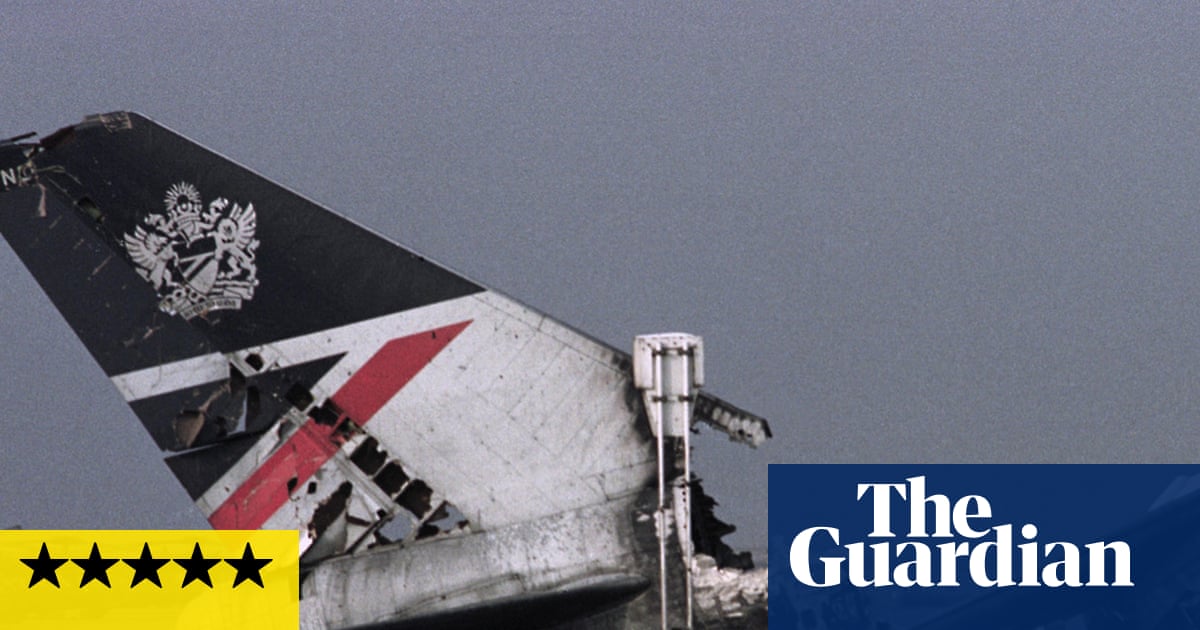If it were a work of fiction, the story of Flight 149 would probably be deemed too horrifying – or too unbelievable – for television. Indeed, as a documentary interspersed with dramatic reconstructions, at points it is almost unbearable to watch. But it is a crucial piece of work: a one-off film that goes deep into a bizarre and increasingly hideous ordeal to ask how and why it happened.
On 2 August 1990, a British Airways plane carrying nearly 400 passengers and crew from London to Kuala Lumpur touched down for a scheduled stopover in Kuwait. Those on board knew nothing of the unfolding Iraqi invasion of the country and the brutality Saddam Hussein was inflicting on his neighbours (this would, of course, soon lead tothe Gulf war). British Airways maintains that it, too, was unaware of what was taking place, while the British government said it didn’t know what was happening until after the plane had landed. Later, it would emerge that it had, in fact, received information before the plane had reached the terminal, but thatit wasn’t shared with the airline.
Staggeringly, many of those on board would spend the next four months in the country, human shields in an unfurling international conflict, with no clear route home. Charlie Kristiansson, a former BA steward, recalls the place looking “like the gates of hell had opened”, as bombs began to explode around them. Initially, the passengers were put up in a plush hotel – a cocoon of sorts, he says. But as time went on, they were dispatched to various squalid locations, including a bungalow where the walls were smothered in excrement.
The goal ofJenny Ash’s documentary – much like the multi-Bafta-winning Mr BatesVs the Post Office– is as much to entertain as to shine a light on what may be a colossal miscarriage of justice. Many of the interviewees here don’t simply address a faceless producer behind a camera – they sit face to face with lawyers from the human rights firm McCue Jury & Partners. Last year, these testimonies were used to constructa class-action lawsuit against BA and the government.
The government could have diverted Flight 149, but – for reasons that remain unclear – didn’t. Stephen Davis, an investigative journalist who reported on the story for the Independent on Sunday at the time, has helped to illuminate what else may have been going on. Namely, allegations that the flight was used to aid a British intelligence operation.
There are interviews here with Margaret Thatcher’s former foreign affairs private secretary Charles Powell and the former US diplomat Barbara Bodine. These are bolstered by archive material that transports viewers back to the chaos unfolding on news bulletinsand even Teletext. But the real heft comes from the survivors’ stories, which sit side by side with reconstructions that feel hazy and incredibly unnerving and which mirror the subjects’ dissociation.
Jennifer Chappell, then 12, recalls seeing the lyrics of theGuns N’ Roses song Paradise Cityon the walls of the military compound where she and her family were held. The moment is recreated by a young actor (Orla Taylor), who lies on a bed in the foetal position singing along to Axl Rose (“Oh, won’t you please take me home?”).
Elsewhere, Kristiansson flinches as he relives the savage sexual assault he was subjected to by an Iraqi soldier, as we are drawn, flashback-like, into the kind of stark tower block where it happened. Barry Manners, separated from his partner, Anthony Yong, in excruciating circumstances, recalls the places he would go in his brain to escape the horror of being locked in a dark room at the site of a dam, not knowing whether it was night or day. Viewers see the couple as they would have been in another life, listening to jazz on a beach in Thailand. Yong died not long after returning to the UK, his already poor health exacerbated by the nightmare of it all.
Unsurprisingly, the passengers of Flight 149 think about what happened every day. Chappell has been diagnosed with borderline personality disorder and post-traumatic stress disorder and has attempted to kill herself. The nearest we get to a happy ending is when Deborah Saloom, an American passenger, recounts her reunion with her husband, known as B George, whom she feared she would never see again (women and children were let out of the country before the men). Stress is engraved into the faces of practically every person we see on screen.
Then head of security at Kuwait airport, Mohammad Al-Dossari, says the BA passengers were “used like chess pieces”. Now, what they desperately want to know is what the people moving those pieces were thinking. Or, as Manners puts it: “Why the fuck was I in this situation in the first place?” Even if we don’t get all the answers, this is a truly excellent place to start.
Flight 149: Hostage of War aired on Sky Documentaries and is available on Now
In the UK and Ireland, Samaritans can be contacted on freephone 116 123, or emailjo@samaritans.orgorjo@samaritans.ie. In the US, you can call or text the National Suicide Prevention Lifeline on 988, chat on988lifeline.org, or text HOME to 741741 to connect with a crisis counsellor. In Australia, the crisis support service Lifeline is 13 11 14. Other international helplines can be found atbefrienders.org
